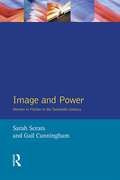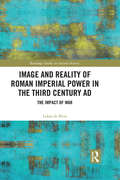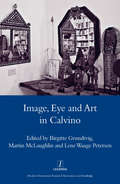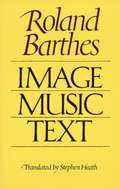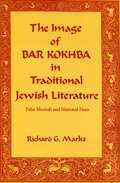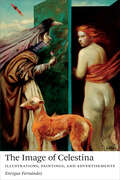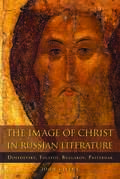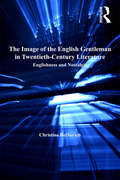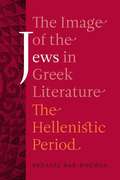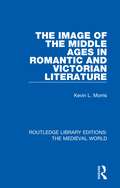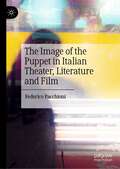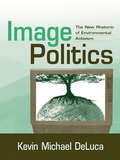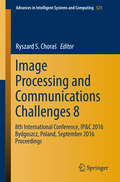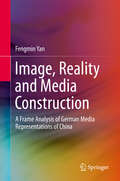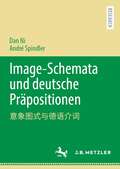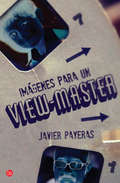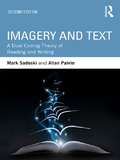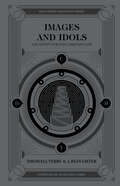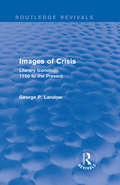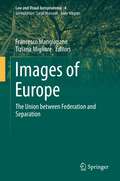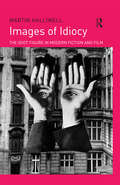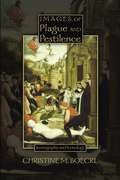- Table View
- List View
Image and Power: Women in Fiction in the Twentieth Century
by Sarah Sceats Gail CunninghamImage and Power is an important work of literary and cultural criticism. This collection of essays focuses on some of the major issues addressed by women's writing in the twentieth century, concerning genre, subjectivity and social and cultural expectations, issues which in the past have been regarded from an essentially male perspective. The text introduces women writers whose novels have been widely read and provides an important contribution to the debate about women in literature.
Image and Reality of Roman Imperial Power in the Third Century AD: The Impact of War (Routledge Studies in Ancient History)
by Lukas de BloisImage and Reality of Roman Imperial Power in the Third Century AD focuses on the wide range of available sources of Roman imperial power in the period AD 193-284, ranging from literary and economic texts, to coins and other artefacts. This volume examines the impact of war on the foundations of the economic, political, military, and ideological power of third-century Roman emperors, and the lasting effects of this. This detailed study offers insight into this complex and transformative period in Roman history and will be a valuable resource to any student of Roman imperial power.
Image Ethics in Shakespeare and Spenser
by Victoria Katherine BurbankFocusing on works by Shakespeare and Spenser, this study shows the connection between visuality and ethical action in early modern English literature. The book places early modern debates about the value of visual experience into dialogue with subsequent philosophical and ethical efforts.
Image, Eye and Art in Calvino
by Birgitte GrundtvigFew recent writers have been as interested in the cross-over between texts and visual art as Italo Calvino (1923-85). Involved for most of his life in the publishing industry, he took as much interest in the visual as in the textual aspects of his own and other writers' books. In this volume twenty international Calvino experts, including Barenghi, Battistini, Belpoliti, Hofstadter, Ricci, Scarpa and others, consider the many facets of the interplay between the visual and textual in Calvinos works, from the use of colours in his fiction to the influence of cartoons, from the graphic qualities of the book covers themselves to the significance of photography and landscape in his fiction and non-fiction. The volume is appropriately illustrated with images evoked by Calvino's major texts.
Image, Music, Text
by Roland Barthes Stephen HeathThese essays, as selected and translated by Stephen Heath, are among the finest writings Barthes ever published on film and photography, and on the phenomena of sound and image. The classic pieces "Introduction to the Structural Analysis of Narrative" and "The Death of the Author" are also included.
The Image of Bar Kokhba in Traditional Jewish Literature: False Messiah and National Hero (Hermeneutics: Studies in the History of Religions)
by Richard G. MarksBar Kokhba led the Jewish rebellion against Rome in 132–135 A.D., which resulted in massive destruction and dislocation of the Jewish populace of Judea. In early rabbinic literature, Bar Kokhba was remembered in two ways: as an imposter claiming to be the Messiah and as a glorious military leader whose successes led Rabbi Akiba, one of the great rabbinic authorities of Jewish tradition, to acclaim him the Messiah. These two earliest images formed the core of most later perceptions of Bar Kokhba, so that he became the prototypical false messiah and the paradigmatic rebel of Jewish history.The Image of Bar Kokhba in Traditional Jewish Literature is a history of the perceptions that later Jewish writers living in the fourth through seventeenth centuries formed of this legendary hero-villain whose actions, in their eyes, had caused enormous suffering and disappointed messianic hopes. Richard Marks examines each writer's account individually and in the context of its period, exploring particularly political and religious implications. He builds a history of images and looks at larger patterns, such as the desacralizing of traditional imagery. His findings raise timely political questions about Bar Kokhba's image among Jews today.
The Image of Celestina: Illustrations, Paintings, and Advertisements (Toronto Iberic)
by Enrique FernándezLa Celestina, a Spanish literary masterpiece second only in importance to Don Quixote in Spanish literature, has been shaped by the inclusion of images from its very first edition in 1499. The subsequent five centuries were punctuated by many illustrated editions; imaginary portraits of the eponymous procuress Celestina by painters such as Murillo, Goya, and Picasso; and, more recently, screen and stage adaptations. Celestina became the prototype from which later representations of procuresses and bawds derived. The Image of Celestina sheds light on the visual culture that developed around La Celestina, including paintings, illustrations, and advertisements. Enrique Fernández examines La Celestina as a mixed-media text, incorporating methods from disciplines such as art history and women’s and cinema studies, and considers a variety of images including promotional posters, lobby pictures, and playbills of theatrical and cinematic adaptations of the book. Using a visual studies approach, The Image of Celestina ultimately illuminates the culture of Celestina, a mythical figure, who surpasses the literary text in which she originated.
The Image of Christ in Russian Literature: Dostoevsky, Tolstoy, Bulgakov, Pasternak (NIU Series in Slavic, East European, and Eurasian Studies)
by John GivensVladimir Nabokov complained about the number of Dostoevsky's characters "sinning their way to Jesus." In truth, Christ is an elusive figure not only in Dostoevsky's novels, but in Russian literature as a whole. The rise of the historical critical method of biblical criticism in the nineteenth century and the growth of secularism it stimulated made an earnest affirmation of Jesus in literature highly problematic. If they affirmed Jesus too directly, writers paradoxically risked diminishing him, either by deploying faith explanations that no longer persuade in an age of skepticism or by reducing Christ to a mere argument in an ideological dispute. The writers at the heart of this study understood that to reimage Christ for their age, they had to make him known through indirect, even negative ways, lest what they say about him be mistaken for cliché, doctrine, or naïve apologetics. The Christology of Dostoevsky, Leo Tolstoy, Mikhail Bulgakov, and Boris Pasternak is thus apophatic because they deploy negative formulations (saying what God is not) in their writings about Jesus. Professions of atheism in Dostoevsky and Tolstoy's non-divine Jesus are but separate negative paths toward truer discernment of Christ. This first study in English of the image of Christ in Russian literature highlights the importance of apophaticism as a theological practice and a literary method in understanding the Russian Christ. It also emphasizes the importance of skepticism in Russian literary attitudes toward Jesus on the part of writers whose private crucibles of doubt produced some of the most provocative and enduring images of Christ in world literature. This important study will appeal to scholars and students of Orthodox Christianity and Russian literature, as well as educated general readers interested in religion and nineteenth-century Russian novels.
The Image of the Artist in Archaic and Classical Greece
by Guy HedreenThis book explores the persona of the artist in Archaic and Classical Greek art and literature. Guy Hedreen argues that artistic subjectivity, first expressed in Athenian vase-painting of the sixth century BCE and intensively explored by Euphronios, developed alongside a self-consciously constructed persona of the poet. He explains how poets like Archilochos and Hipponax identified with the wily Homeric character of Odysseus as a prototype of the successful narrator, and how the lame yet resourceful artist-god Hephaistos is emulated by Archaic vase-painters such as Kleitias. In lyric poetry and pictorial art, Hedreen traces a widespread conception of the artist or poet as socially marginal, sometimes physically imperfect, but rhetorically clever, technically peerless, and a master of fiction. Bringing together in a sustained analysis the roots of subjectivity across media, this book offers a new way of studying the relationship between poetry and art in ancient Greece.
The Image of the English Gentleman in Twentieth-Century Literature: Englishness and Nostalgia
by Christine BerberichStudies of the English gentleman have tended to focus mainly on the nineteenth century, encouraging the implicit assumption that this influential literary trope has less resonance for twentieth-century literature and culture. Christine Berberich challenges this notion by showing that the English gentleman has proven to be a remarkably adaptable and relevant ideal that continues to influence not only literature but other forms of representation, including the media and advertising industries. Focusing on Siegfried Sassoon, Anthony Powell, Evelyn Waugh and Kazuo Ishiguro, whose presentations of the gentlemanly ideal are analysed in their specific cultural, historical, and sociological contexts, Berberich pays particular attention to the role of nostalgia and its relationship to 'Englishness'. Though 'Englishness' and by extension the English gentleman continue to be linked to depictions of England as the green and pleasant land of imagined bygone days, Berberich counterbalances this perception by showing that the figure of the English gentleman is the medium through which these authors and many of their contemporaries critique the shifting mores of contemporary society. Twentieth-century depictions of the gentleman thus have much to tell us about rapidly changing conceptions of national, class, and gender identity.
The Image of the Jews in Greek Literature: The Hellenistic Period
by Bezalel Bar-KochvaExamining the attitudes of Hellenistic Greek authors and scholars toward the Jewish people, and their religion and customs, over a span of 270 years, this book focuses on twelve authors from whom we have fragments and testimonials referring to the Jews.
The Image of the Middle Ages in Romantic and Victorian Literature (Routledge Library Editions: The Medieval World #37)
by Kevin L. MorrisOriginally published in 1984, The Image of the Middle Ages in Romantic and Victorian Literature looks at the impact of medievalism in the 18th and 19th centuries and the importance of post-Enlightenment literary religious medievalism. The book suggests that religious medievalism was not a superficial cultural phenomenon and that the romantic spirit with which it was chronologically connected, was intimately associated with the metaphysical. The book suggests that this belief gave birth to the metaphysical yearning and cultural expression of the eighteenth and nineteenth century. The book seeks to clarify the post-Enlightenment relationship between aesthetic culture and ‘aesthetic’ religion, romanticism, medievalism and religious trends.
The Image of the Puppet in Italian Theater, Literature and Film
by Federico PacchioniWith the advancement of cybernetics, avatars, animation, and virtual reality, a thorough understanding of how the puppet metaphor originates from specific theatrical practices and media is especially relevant today. This book identifies and interprets the aesthetic and cultural significance of the different traditions of the Italian puppet theater in the broader Italian culture and beyond. Grounded in the often-overlooked history of the evolution of several Italian puppetry traditions – the central and northern Italian stringed marionettes, the Sicilian pupi, the glove puppets of the Po Valley, and the Neapolitan Pulcinella – this study examines a broad spectrum of visual, cinematic, literary, and digital texts representative of the functions and themes of the puppet. A systematic analysis of the meanings ascribed to the idea and image of the puppet provides a unique vantage point to observe the perseverance and transformation of its deeper associations, linking premodern, modern, and contemporary contexts.
Image Politics: The New Rhetoric of Environmental Activism (Revisioning Rhetoric Ser.)
by Kevin Michael DeLucaThis exceptional volume examines “image events” as a rhetorical tactic utilized by environmental activists. Author Kevin Michael DeLuca analyzes widely televised environmentalist actions in depth to illustrate how the image event fulfills fundamental rhetorical functions in constructing and transforming identities, discourses, communities, cultures, and world views. Image Politics also exhibits how such events create opportunities for a politics that does not rely on centralized leadership or universal metanarratives. The book presents a rhetoric of the visual for our mediated age as it illuminates new political possibilities currently enacted by radical environmental groups. Chapters in the volume cover key areas of environmental activism such as:*The rhetoric of social movements;*Imaging social movements;*Environmental justice groups; and*Participatory democracy. This book is of interest to scholars and students of rhetorical theory, media and communication theory, visual theory, environmental studies, social change movements, and political theory. It will also appeal to others interested in ecology, radical environmental politics, and activism, and is an excellent supplemental text in advanced undergraduate and graduate level courses in these areas.
Image Processing and Communications Challenges 8
by Ryszard S. ChoraśThis book collects a series of research papers in the area of Image Processing and Communications which not only introduce a summary of current technology but also give an outlook of potential feature problems in this area. The key objective of the book is to provide a collection of comprehensive references on some recent theoretical development as well as novel applications in image processing and communications. The book is divided into two parts and presents the proceedings of the 8th International Image Processing and Communications Conference (IP&C 2016) held in Bydgoszcz, Poland September 7-9 2016. Part I deals with image processing. A comprehensive survey of different methods of image processing, computer vision is also presented. Part II deals with the telecommunications networks and computer networks. Applications in these areas are considered.
Image, Reality and Media Construction: A Frame Analysis of German Media Representations of China
by Fengmin YanThis book explores how news media construct social issues and events and thereby convey certain perceptions within the scope of framing theory. By operationalizing media framing as a process of interpretation through defining problem, diagnosing causes, making moral judgments and suggesting solutions, the book proposes a systematic and transparent approach to images in news discourse. Based on a frame analysis, it examines how German news media framed a list of China-related issues and events, and thereby conveyed particular beliefs and opinions on this country. Moreover, it investigates whether there were dominant patterns of interpretation and the extent to which diverse views were evident by comparing two major daily newspapers with opposite political orientations - the FAZ and the taz. Motivated by the relationship between image and reality, the book explores image formation and persistence from media construction of meaning and human cognitive complexity in perceiving others. Media select certain issues and events and then interpret them from particular perspectives. A variety of professional and non-professional factors behind news making may result in biased representations. In addition, from a social psychological perspective, inaccurate perceptions of foreign cultures may arise from categorical thinking, biased processing of stimulus information, intergroup conflicts of interest and in-group favoritism.Accordingly, whether media coverage deviates from reality is not the main concern of this book; instead, it emphasizes the underlying logics upon which the conclusions and judgments were drawn. It therefore contributes to a rational understanding of Western discourse and holds practical implications for both Chinese public diplomacy and a more constructive role of news media in promoting the understanding of others.
Image-Schemata und deutsche Präpositionen: 意象图式与德语介词
by Dan Ni André SpindlerDiese Veröffentlichung beleuchtet Aspekte ausgewählter deutscher Präpositionen aus der Sicht chinesischsprachiger Lerner. Ausgewählt wurden Präpositionen, die dem Lerner des Deutschen besonders häufig begegnen. Einfache chinesische Erläuterungen und anschauliche Beispielsätze sollen dabei ein besseres Verständnis ermöglichen, bzw. dabei helfen, den Unterricht anschaulicher und interessanter zu gestalten.
Imágenes para un View-Master
by Javier PayerasImágenes para un View-Master es una antología que recoge una novela breve y relatos que describen circunstancias y personajes cotidianos, y que buscan acercar al lector la experiencia de ver a través de un View-Master, el juguete vintage que permitía ver la vida a través de fotografías o instantáneas. Igual que casi toda la prosa escrita por poetas, la de Javier Payeras puede ser estática, hipnótica y, en el mejor de los casos, extática. Imágenes para un View Master, que da título a esta colección, es como un collar hecho de extraños, tiernos o terribles abalorios. En estas ¨filminas¨ Payeras deja que sus personajes -anti-héroes urbanos- se muevan en territorios de límites vagamente delineados entre lo banal y lo trascendental. Su lectura -como la fugaz mirada involuntaria en un espejo- nos deja ver algo inesperado, incómodo o hermoso, sobre un fondo inhumano del que ya no nos percatábamos, de puro familiar. -Rodrigo Rey Rosa
Imagery and Text: A Dual Coding Theory of Reading and Writing
by Mark Sadoski Allan PaivioImagery and Text, Second Edition extends the first edition’s unified theory of cognition in literacy from the perspective of Dual Coding Theory (DCT), one of the most influential and empirically sound theories of cognition ever developed. This theory provides a comprehensive, systematic account of all major aspects of literacy including decoding, comprehension, and response in reading and composing in writing. The Second Edition updates DCT as a scientific theory, a cognitive theory, an embodied theory, and a constructivist theory of literacy. New content includes a detailed account of the decoding process and its integral connection to comprehension, a new program of research on DCT in composing text, a review of neuroscientific support, and increased attention to multimedia literacy, socio-cultural influences, and recent educational applications. More than any other theory, DCT explains how both verbal and nonverbal cognition are woven together through all aspects of literacy. Written in concise chapters with illustrative examples, Imagery and Text is approachable for both students and advanced scholars in the field of literacy.
Images and Idols: Creativity for the Christian Life
by Thomas J Terry J. Ryan ListerChristians ought to be leading the way in creativity, but we rarely do. God is the Creator of all things, and He created us in His image. Creativity is woven into the very fabric of our humanity. Therefore, Christians should value and champion creativity as a vital part of our image-bearing role. Instead Christians often don&’t know what to do with creatives and creatives don&’t know what to do with Christianity. On one side you have Christians who neglect or discount art, imagination, and beauty altogether. On the other, you have artists who make idols out of each of these good things. Ryan Lister, a theology professor, and Thomas Terry, a spoken word artist and founder of Humble Beast, team up to help restore the connection between creativity and theology. Images & Idols is a theological and artistic exploration of creativity in the Christian life. It will help creatives build a strong theological foundation for their art, while challenging the church to embrace a theology of beauty and creativity.
Images and Idols: Creativity for the Christian Life
by Thomas J Terry J. Ryan ListerChristians ought to be leading the way in creativity, but we rarely do. God is the Creator of all things, and He created us in His image. Creativity is woven into the very fabric of our humanity. Therefore, Christians should value and champion creativity as a vital part of our image-bearing role. Instead Christians often don&’t know what to do with creatives and creatives don&’t know what to do with Christianity. On one side you have Christians who neglect or discount art, imagination, and beauty altogether. On the other, you have artists who make idols out of each of these good things. Ryan Lister, a theology professor, and Thomas Terry, a spoken word artist and founder of Humble Beast, team up to help restore the connection between creativity and theology. Images & Idols is a theological and artistic exploration of creativity in the Christian life. It will help creatives build a strong theological foundation for their art, while challenging the church to embrace a theology of beauty and creativity.
Images of Crisis: Literary Iconology, 1750 to the Present (Routledge Revivals)
by George P. LandowFirst published in 1982, Images of Crisis explores the premise that literature and art exploit various images to present culturally prevalent ideas, and thus create their own form of iconology. George Landow shows how the tumultuous history of the past two hundred years has resulted in a plethora of metaphors associated with moments of human crisis. Avalanches and volcanoes emerge as focal images in an aesthetic that concerns itself increasingly with the vulnerability of humanity. However, it is in the transformation of traditional religious images that the ideas of the vacant universe are most dramatically presented. Associated with this central idea are ironic transformations of other images that formerly had been associated with Christianity as paradigms of belief: the journey of Odysseus, the rainbow of the Covenant and Robinson Crusoe. Combining close textual analysis with a theory of literary iconology, this fascinating reissue will be of particular value to students with an interest in literary images, and literary and cultural history.
Images of Europe: The Union between Federation and Separation (Law and Visual Jurisprudence #4)
by Francesco Mangiapane Tiziana MiglioreThis book deals with the fundamental semantics of images of Europe, which consist of valences, mirror beliefs and affectivities. This is why it relaunches the importance of the European discourse in its symbolic dimension. As such, it explores the many images of Europe, or rather the many images through which European discourse is actually constituted in daily life, in search of their enunciative responsibility in today’s world for determining the current “State of the Union”. The identity of the European continent is based on a millenary tension between universalism and particularism: images of Europe have in fact been alternately inspired, over the centuries, by a model of homogeneity – Roman and Carolingian imperial disposition – on the one hand, and by a model of fragmentation – a Europe of city-states, municipalities, regions and small fatherlands – on the other. In the European Union, a political and economic organism, this issue has recently been amplified to the point that it has reentered public debate, and political parties that are only recognizable for being Europeanists or anti-Europeanists are now ubiquitous. In this regard, one major bone of contention is how to portray the quintessential aspects of the European territory, which are either interpreted as “thresholds” to be overcome in the name of a model of United Europe – “integral totality” – or are instead regarded as insurmountable obstacles for a Europe that is irreparably and perhaps, according to anti-Europeanists, fortunately fragmented – “partitive totality”. Further, this is to be done without excluding the possibility of contradictory and complementary solutions to these binary visions. In this context the book analyzes various texts in order to obtain a more precise picture of the clash, reveal its semiotic forms, and by doing so, identify a way out of the crisis.
Images of Idiocy: The Idiot Figure in Modern Fiction and Film
by Martin HalliwellThis book traces the concept of idiocy as it has developed in fiction and film in the nineteenth and twentieth centuries. It focuses particularly on visual images of idiocy and argues that writers as diverse as Gustave Flaubert, Fyodor Dostoevsky, Joseph Conrad, John Steinbeck, Flannery O'Connor and Rohinton Mistry, and filmmakers such as Jean Renoir, Akira Kurosawa, Alfred Hitchcock, Werner Herzog and John Huston have all been attracted to idiot figures as a way of thinking through issues of language acquisition, intelligence, creativity, disability, religion and social identity. Martin Halliwell provides a lively and detailed discussion of the most significant literary and cinematic uses of idiocy, arguing that scientific conceptions of the term as a classifiable medical condition are much too narrow. With the explosion of interest in idiocy among American and European filmmakers in the 1990s and the growing interest in its often overlooked history, this book offers a timely reassessment of idiocy and its distinctive place at the intersection of science and culture.
Images of Plague and Pestilence: Iconography and Iconology (Sixteenth Century Essays & Studies #53)
by Christine M. BoecklSince the late fourteenth century, European artists created an extensive body of images, in paintings, prints, drawings, sculptures, and other media, about the horrors of disease and death, as well as hope and salvation. This interdisciplinary study on disease in metaphysical context is the first general overview of plague art written from an art-historical standpoint. The book selects masterpieces created by Raphael, Titian, Tintoretto, Rubens, Van Dyck, and Poussin, and includes minor works dating from the fourteenth to twentieth centuries. It highlights the most important innovative artistic works that originated during the Renaissance and the Catholic Reformation. This study of the changing iconographic patterns and their iconological interpretations opens a window to the past.
